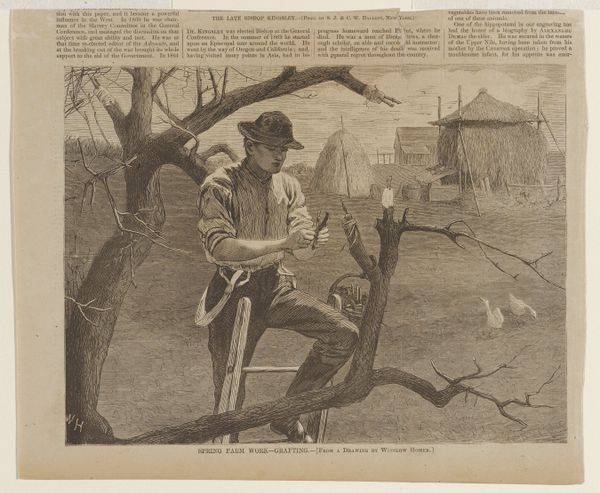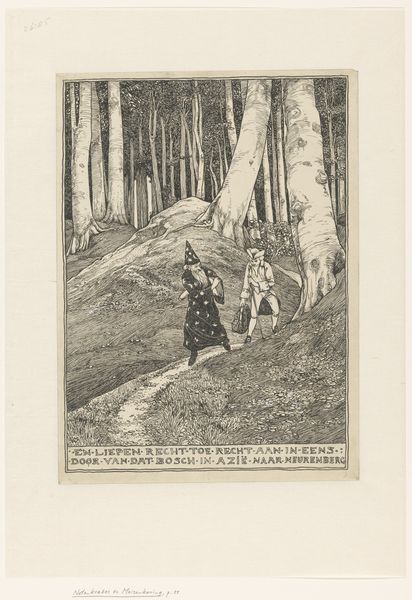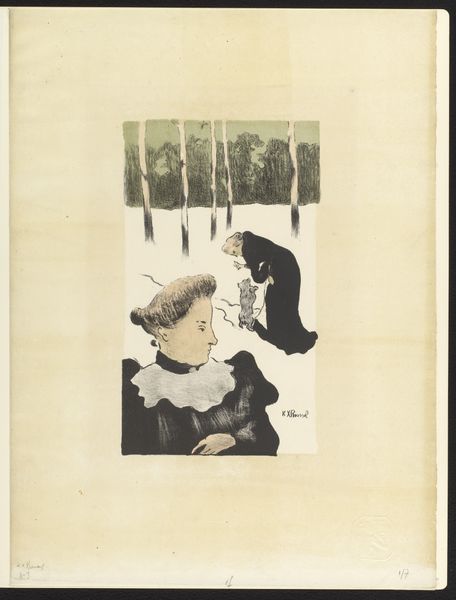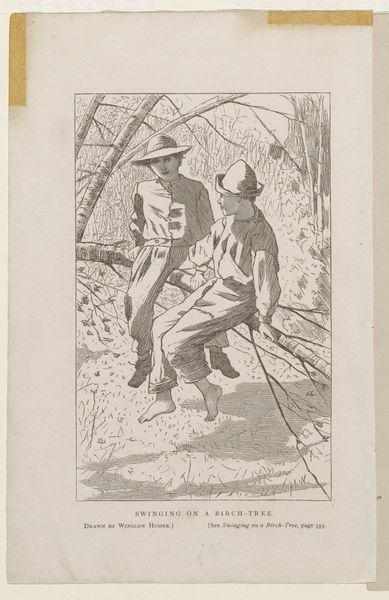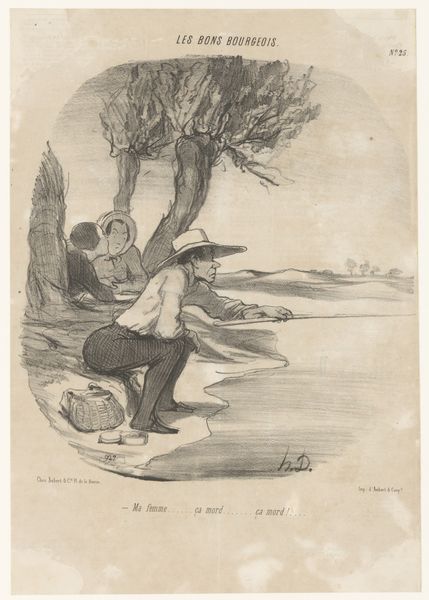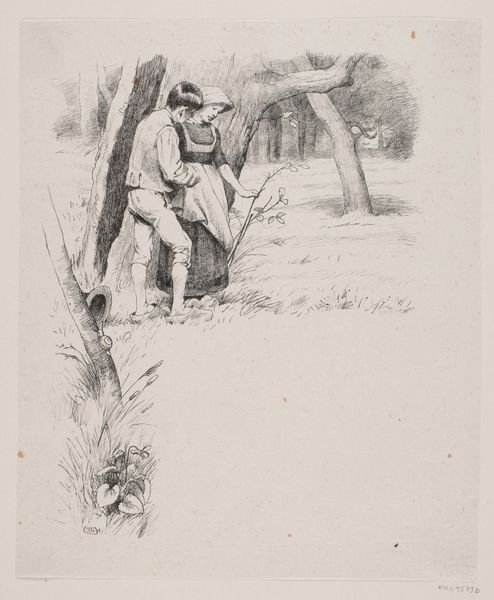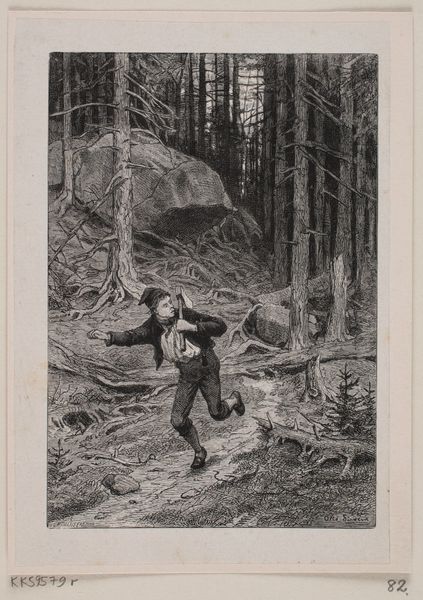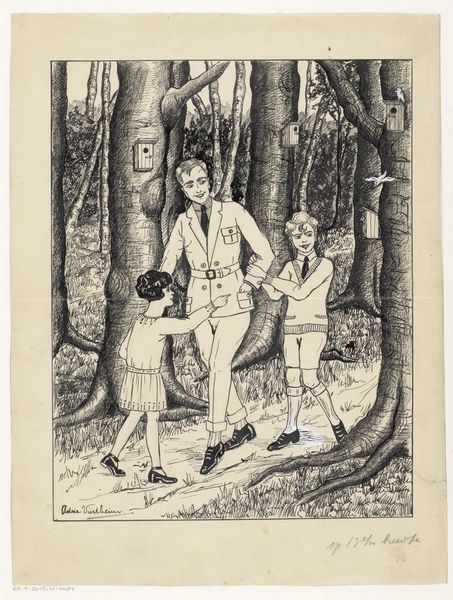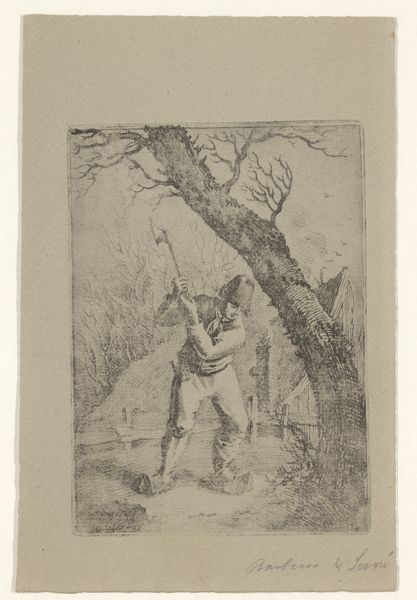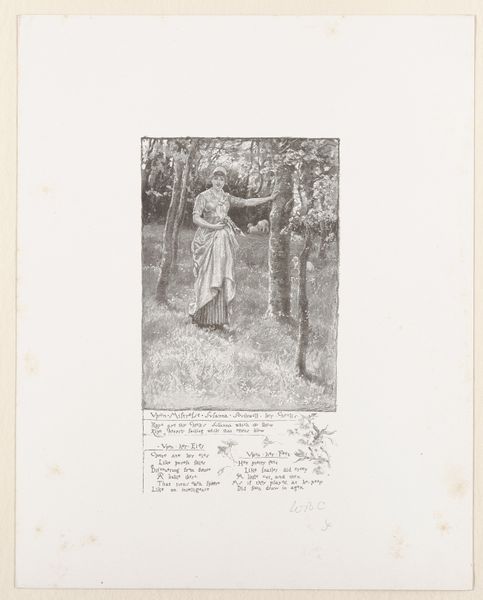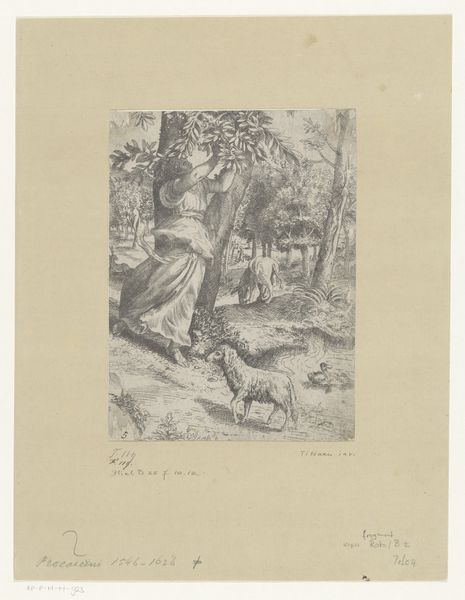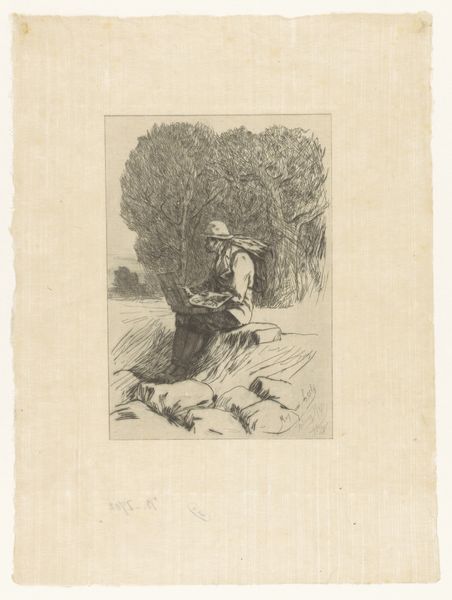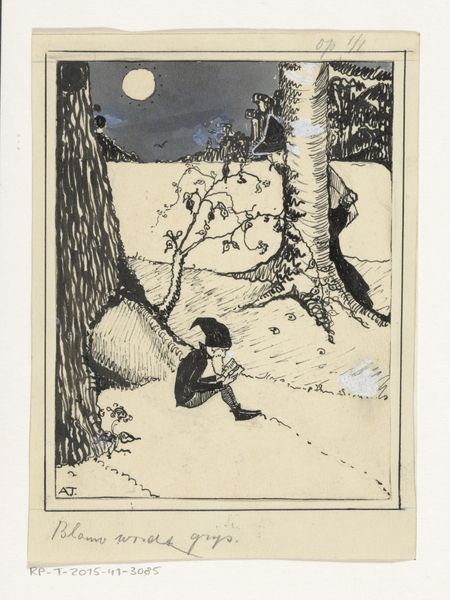
print, watercolor
#
water colours
# print
#
landscape
#
watercolor
#
genre-painting
#
botanical art
#
watercolor
#
realism
Dimensions: height 367 mm, width 266 mm
Copyright: Rijks Museum: Open Domain
Curator: Hermann Vogel created "Het bosch en de houthakker," or "The Forest and the Woodcutter," sometime between 1876 and 1890. It's rendered as a print, specifically using watercolor. Editor: Immediately, the quiet stillness hits me. It's early morning in a sparse forest; you can almost smell the damp earth. The palette is subdued but with subtle greens and browns. Curator: I appreciate that observation, and the artwork speaks to the relationship between humans and nature, one laden with exploitation, the title giving away its critique right away. During that era, the cultural debate regarding natural resources was heating up, though this artwork looks to a fable format. Who holds power? Who pays the price? Editor: Absolutely. You can see it in the figure’s very pose. The woodcutter is framed as pausing on the job, the axe held almost casually—but it's there. It reminds me that all resources require labour to harvest, and access to nature in Vogel's depiction clearly depended on social class. Curator: The symbolism is quite layered. The text is also worth paying attention to because "Het bosch en de houthakker" is linked to fables, moralities, which also has its roots within literary circles in that moment of Belgian history. Vogel isn't simply depicting a scene but engaging with a wider discourse around work ethic and morality in regards to labour. The fable element definitely frames him within particular cultural conventions, almost national narratives, about Flemish society at the time. Editor: I think that focusing on the materiality highlights how it comments on accessibility and production. The print medium suggests wider dissemination, and therefore discussion about the place for manual labor. Also, its texture and the labour that produced it also makes us conscious of art's status as a commodity as well as the work that went into creating it. The use of watercolor is rather soft as well; a clever medium that speaks to ephemerality as well. Curator: These nuances shed light on Vogel's intention. His artistic choice serves not just aesthetic purposes but actively contributes to social commentary. I think there's also a need to highlight how gender might play a role; do woodcutters represent an hypermasculine approach? How do we assess masculinity intersecting with labour here? Editor: Absolutely, that’s a rich intersection. I was also thinking about the role the forest plays. Is the forest a passive resource, a site of industry, a kind of bucolic retreat? These types of artwork become a powerful reminder of the relationship of not only human versus human through capitalism, but also, of humans versus the land. Curator: This intersectional layering in the artwork provides ample room for ongoing critical analysis. It really transcends simple genre-painting and engages social matters that matter today. Editor: Right, by carefully considering materiality alongside social context, we get such a much richer understanding of the image itself as it situates the role of this woodcutter’s production alongside our modern means of consumption.
Comments
No comments
Be the first to comment and join the conversation on the ultimate creative platform.

